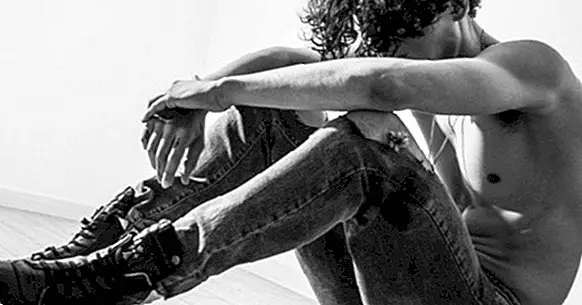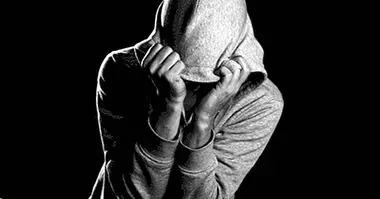Body Dysmorphic Disorder: causes, symptoms and treatment
The Body Dysmorphic Disorder, formerly known as dysmorphophobia, is a disorder related to excessive worry about one's own body image.
People who suffer from this disorder feel great anxiety and irrational perception about their own body that ends up causing destructive effects in their lives, and that leads them to develop habits that are negative for their well-being, such as looking in the mirror in excess . These habits have a significant impact on how these people live their day to day and reduce their self-esteem.
How a person with Body Dysmorphic Disorder (TCD) feels
The image we have of ourselves is one of the factors that play a more important role in our level of well-being. Although it is not something tangible, this self-image linked to our self-esteem can not only make us feel better or worse with who we are , but also has an impact on the way we behave. If our self-esteem is very low, there will be a greater chance that we neglect our hygiene, avoid situations of social interaction with strangers and present depressive symptoms.
However, if this low self-esteem is expressed in the form of excessive concern in real or imaginary physical details that are perceived as imperfections or defects, what may be known as Body Dysmorphic Disorder may appear.
What is Body Dysmorphic Disorder?
People with BDD they suffer continuously because of their physical appearance and, although to a greater or lesser extent, almost everyone cares about the image they project and what others will think of them, they carry the obsession and concern for their appearance to pathological extremes. It is an obsession that leads us to constantly ask ourselves how we can eliminate certain physical imperfections of our body and, at the same time, make us fantasize about what our life would be like without that "ballast".
The concern for physical appearance has become normal considering the culture of the image in which we live immersed. But when that worry becomes too much of our life and leads to self-destructive behavior, then we are talking about a serious problem that must be addressed.
In summary, individuals with Body Dysmorphic Disorder usually think, feel or behave in the following way:
- They have a negative perception of their body image
- Feelings of shame, guilt or loneliness
- They usually isolate themselves and avoid situations that can cause anxiety or discomfort
- Depression or anxiety
- They usually use drugs or other drugs
- Self-injury
- Suicidal thoughts
It usually happens that people with Body Dysmorphic Disorder do not look for help, because they are too worried about how people will judge them or if they will think they are very vain. So, many of these individuals do not receive treatment until they have been experiencing this pathology for a long time .
Michael Jackson, the most famous case of Body Dysmorphic Disorder
The TDC is encompassed within Obsessive-Compulsive Disorders, and, therefore, this type of patients develop anxious symptoms and compulsive routines . But of course, the characteristic of this disorder is the excessive fixation by the body image itself, which leads them to look bad in front of the mirror and magnify what they do not like about their body.
We all know the famous case of Michael Jackson , the artist known worldwide as King of Pop, who was at the top of the music world for more than three decades. No one can discuss his talent as a singer and dancer and his contribution to music, but his continued exposure to the media and his hard childhood marked his private life. "MJ" was transforming his body after several surgical interventions, and, although there are many speculations, rumors and information about what happened inside his mind, it is evident that he was never comfortable with his body.
Signs of Body Dysmorphic Disorder
Many wonder how someone who has been, is, and will be the inspiration of so many individuals suffered so much during their life. Obviously, few people will be exposed from small to fame and continued appearance in the media as Michael Jackson. But despite the fact that everyone experiences Body Dysmorphic Disorder in their own way, there are a series of signs that characterize this disorder .
Obsessions about one's body are so frequent that these people can spend several hours a day thinking negatively about their physical appearance. In addition, they usually concentrate on a specific area of their body that causes them constant anxiety.
These people usually:
- Obsessing with facial features: nose, eyes, hair, chin, skin, lips, ears ...
- Obsessing with particular areas of the body, for example, breasts or genitals
- Have a negative perception of some bodily characteristic and think that it is out of proportion
- Have a perception of some bodily characteristic and think that it is asymmetric
- Looking too thin or obese
- Have feeding problems
- Perform compulsive behaviors to avoid the anxiety of obsession: use makeup when you are in public, combing continuously, put on clothes that cover the body, go through the operating room constantly or take medication to lose weight or gain weight, etc.
What Causes Body Dysmorphic Disorder
It is difficult to determine exactly what causes this disorder. In spite of everything, l The investigations have concluded that there are different causes that cause an individual to end up suffering from this disorder.
The culture of the image
It is clear that the culture of the image and the influence of the media , which makes us objects rather than subjects, exerts a determining influence on how we perceive our own body. We are continually surrounded by magazines and advertisements that send us the message that they say that if we do not have the perfect body we are worthless. The best way to counteract this negative influence is education from an early age so that we value other things in life.
Bullying
People who suffer from BDD may have developed a negative perception of their own image as a result of having been harassed during adolescence (although also at younger or later ages), when the individual is more sensitive about their physical appearance. In addition, teasing schoolmates can cause this type of disorder.
Low self-esteem
Low self-esteem can be a consequence of the TDC but also a cause, which can make an individual look worse than it is. For example, think that you have too many kilos.
Fear of being alone
The fear of not having friends or a partner can cause an individual to develop thought patterns that lead him to suffer BDD. For example, if a person thinks that thanks to appearance they can have more friends and be more popular, the extra pressure to get it can lead to suffering TDC.
Perfectionism
The perfectionists they are very hard on themselves and they demand a lot . Your obsession with perfection may be centered on your physical appearance, which predisposes you to suffer BDD.
To learn more about perfectionism, you can read our article: "Perfectionist personality: the disadvantages of perfectionism"Treatment of Body Dysmorphic Disorder
When a person suffers from this disorder, The first thing you should do is accept it and seek help . It is necessary for the person to talk with their relatives or close friends so they do not feel alone. The next step is to seek professional help. Surely the first person I contact is the family doctor.
The family doctor can make a first diagnosis, but it is necessary to contact a psychologist specialized in the subject, since it is necessary to reeducate the individual so that he acquires positive behavior patterns and realistic thought patterns.
The cognitive behavioral therapy (CBT) It is usually the treatment par excellence in this type of disorder, although not all treatments work for everyone. The goal of the cognitive behavioral therapist is to identify the connections between the patient's thoughts, feelings and behavior, so that the patient can acquire practical skills to overcome this disorder. The therapy can be group or individual.
In the treatment of BDD, cognitive behavioral therapy will normally focus on the individual's attitude towards their own body and their physical appearance, with the aim of reduce the need to carry out negative behaviors and help the patient to feel less anxious about their own body image . Different cognitive behavioral techniques are often used: expository techniques, social skills and cognitive restructuring.
To deepen cognitive behavioral therapy, we invite you to read our article: "Behavioral Cognitive Therapy: what is it and on what principles is it based?"



















